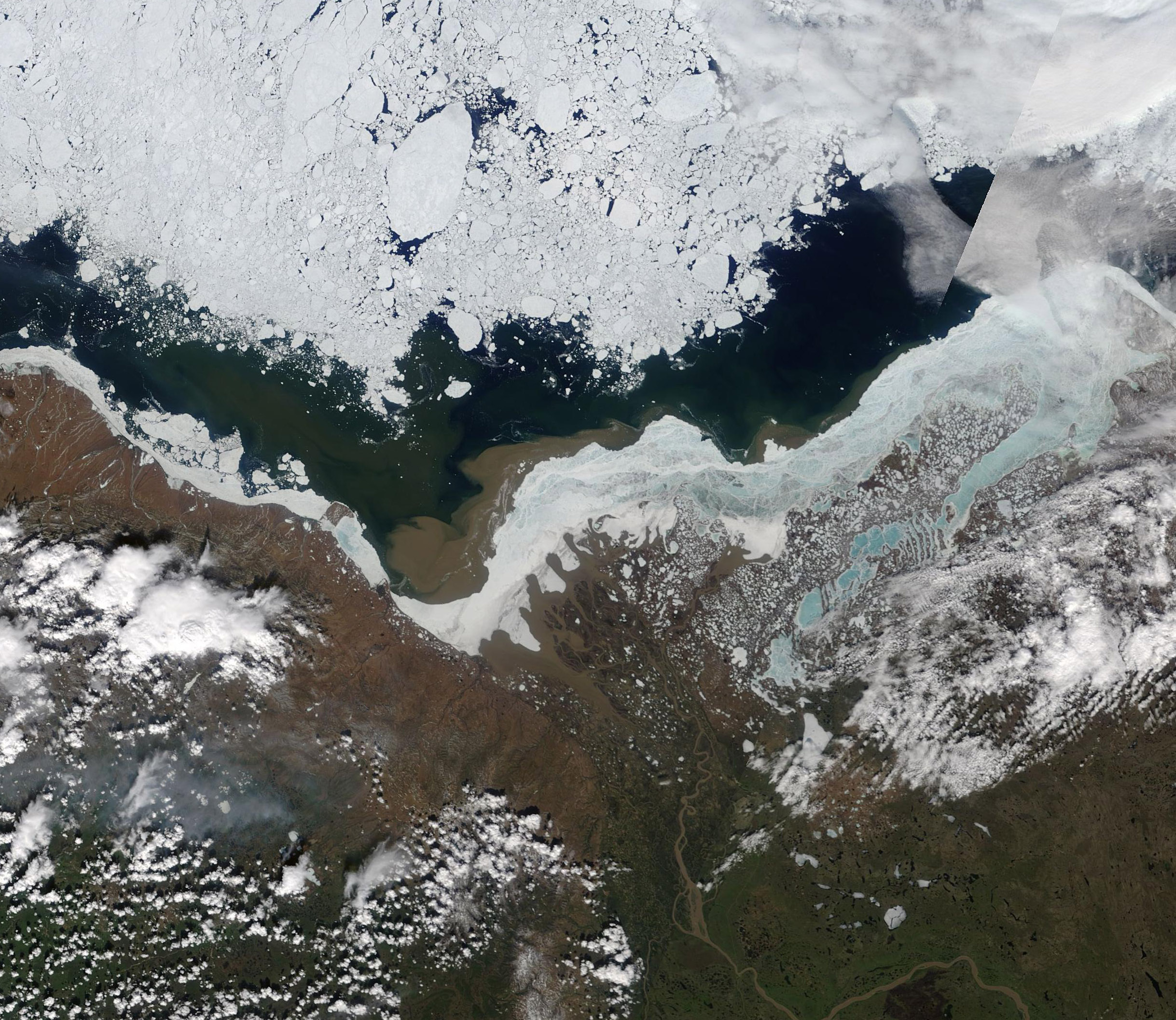Images
June 14, 2020 - Mackenzie Bay
Tweet
Mackenzie Bay sits in the Canadian Arctic, close to the border of Yukon Territory, Canada. Each winter, a thick coating of ice solidifies over the Bay while deep snow coats the landscape. As temperatures rise in spring, the Mackenzie River, which flows from the warmer south into Mackenzie Bay, swells with meltwater. As it flows towards the Bay, the rushing of warmer meltwater aids in breaking up the ice clinging to the river and aids in spurring sea ice retraction from the shoreline. Spring melt also fills the river with sediment, which is carried to and dumped into the chilly waters of Mackenzie Bay. Eventually, increasing temperatures of spring and the flow of warmer fresh water prevail over the layer of sea ice and by summer the river flows freely into Mackenzie Bay and from there into the Beaufort Sea.
On June 11, 2020, the Moderate Resolution Imaging Spectroradiometer (MODIS) on board NASA’s Terra satellite acquired a true-color image of Mackenzie Bay. A layer of sea ice, broken and retreating, covers the waters of the Bay away from shore and a layer of fast ice clings to the Canadian coastline. The Mackenzie River, swollen with spring meltwater and sediment, curls through the scene from the bottom (south) and flows northward. On the river’s delta, fingers of sediment can be seen encroaching on the ice, while copious muddy-brown sediment spills into the Bay underneath the ice.
Image Facts
Satellite:
Terra
Date Acquired: 6/11/2020
Resolutions:
1km (156.7 KB), 500m (490.9 KB), 250m (1.8 MB)
Bands Used: 1,4,3
Image Credit:
MODIS Land Rapid Response Team, NASA GSFC
Tweet
Mackenzie Bay sits in the Canadian Arctic, close to the border of Yukon Territory, Canada. Each winter, a thick coating of ice solidifies over the Bay while deep snow coats the landscape. As temperatures rise in spring, the Mackenzie River, which flows from the warmer south into Mackenzie Bay, swells with meltwater. As it flows towards the Bay, the rushing of warmer meltwater aids in breaking up the ice clinging to the river and aids in spurring sea ice retraction from the shoreline. Spring melt also fills the river with sediment, which is carried to and dumped into the chilly waters of Mackenzie Bay. Eventually, increasing temperatures of spring and the flow of warmer fresh water prevail over the layer of sea ice and by summer the river flows freely into Mackenzie Bay and from there into the Beaufort Sea.
On June 11, 2020, the Moderate Resolution Imaging Spectroradiometer (MODIS) on board NASA’s Terra satellite acquired a true-color image of Mackenzie Bay. A layer of sea ice, broken and retreating, covers the waters of the Bay away from shore and a layer of fast ice clings to the Canadian coastline. The Mackenzie River, swollen with spring meltwater and sediment, curls through the scene from the bottom (south) and flows northward. On the river’s delta, fingers of sediment can be seen encroaching on the ice, while copious muddy-brown sediment spills into the Bay underneath the ice.
Image Facts
Satellite:
Terra
Date Acquired: 6/11/2020
Resolutions:
1km (156.7 KB), 500m (490.9 KB), 250m (1.8 MB)
Bands Used: 1,4,3
Image Credit:
MODIS Land Rapid Response Team, NASA GSFC




